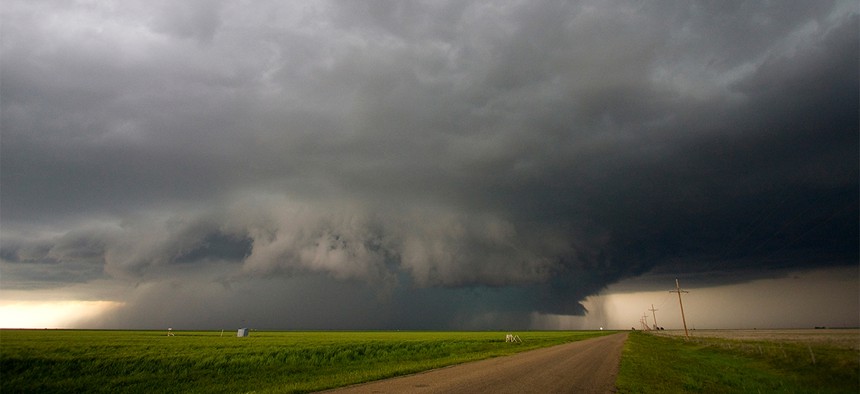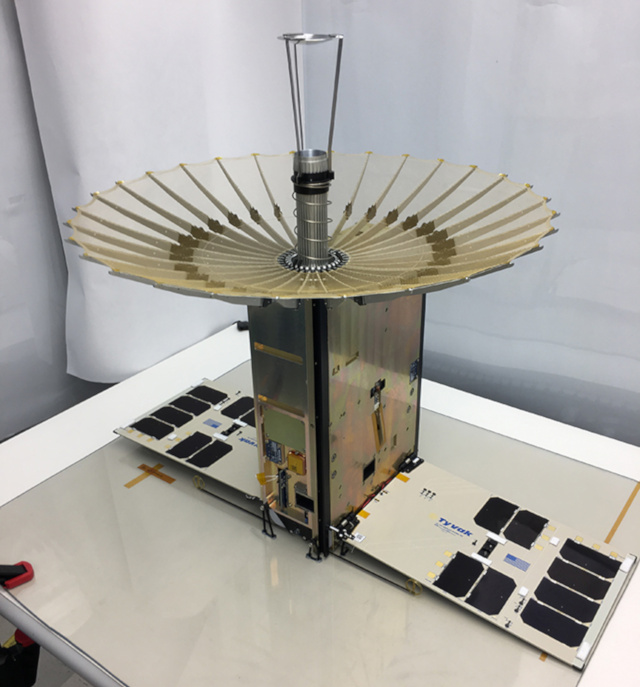NASA's Mini-Satellite Could Improve Your Weather Forecast

NASA/UCAR
This tiny device is designed to track massive storms.
There are many weather satellites orbiting the Earth, some working and some not, but none are as tiny and kind of cute as NASA's RainCube, which the agency is currently testing.
The satellite is no bigger than a shoe box and is equipped with tiny instruments and a small antenna that looks, quite appropriately, like an umbrella.

NASA deployed the first test satellite in July, launching it into low-Earth orbit from the International Space Station. The satellites use radar to see inside storms, gather data on them and sends that data back down to Earth in real time.
"The radar signal penetrates the storm, and then the radar receives back an echo," said Principal Investigator Eva Peral. "As the radar signal goes deeper into the layers of the storm and measures the rain at those layers, we get a snapshot of the activity inside the storm."
RainCube has already sent information and images from an August storm over Mexico as well as images of the first rainfall from Hurricane Florence.
NASA hopes to eventually deploy an entire fleet of RainCubes that will work together to track storms and relay information minute-by-minute.
"We actually will end up doing much more interesting insightful science with a constellation rather than with just one of them," said Graeme Stephens, director of the Center of Climate Sciences at NASA's Jet Propulsion Laboratory.
NEXT STORY: The Always-On Police Camera






